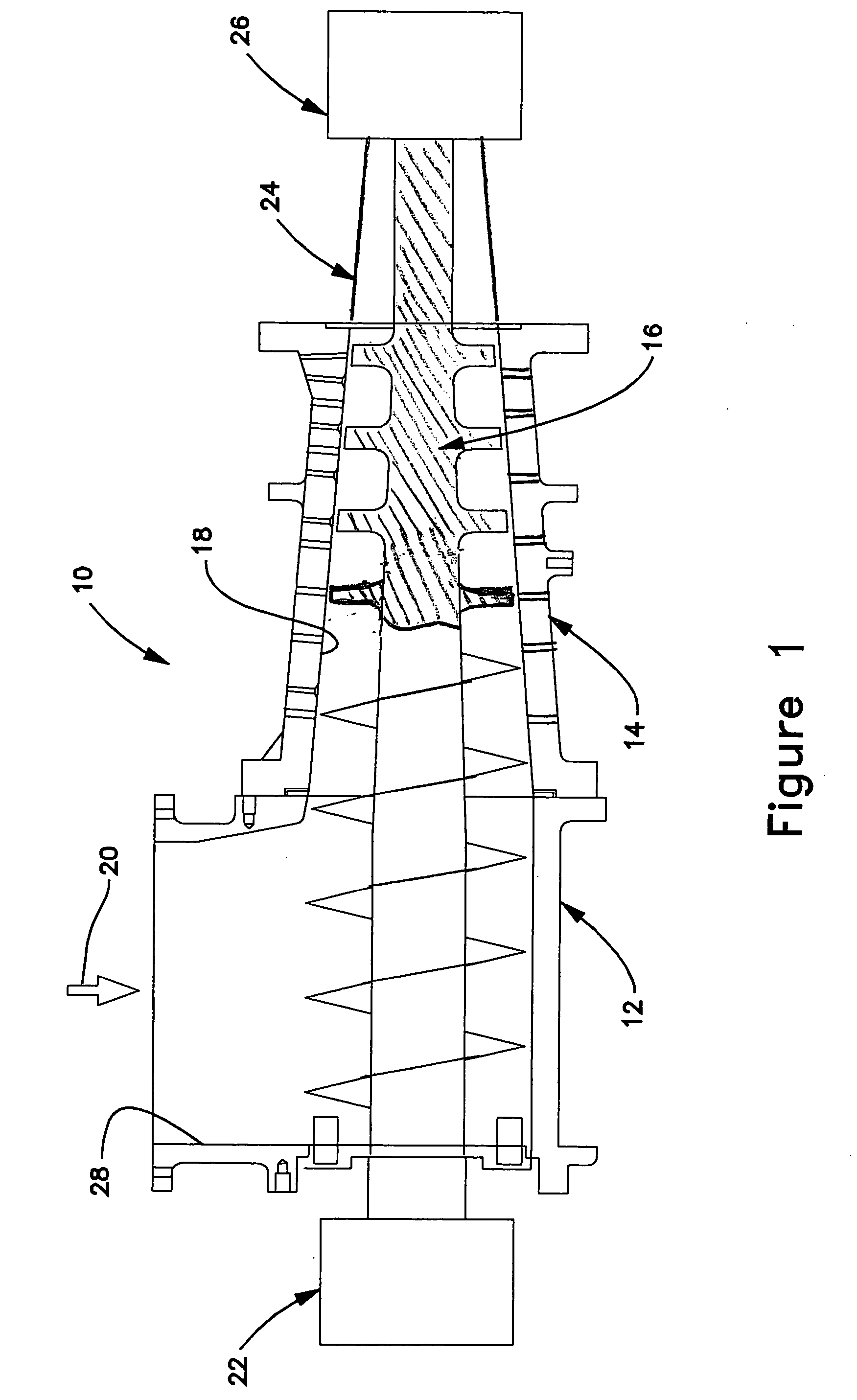Compression screw with combination single and double flights
- Summary
- Abstract
- Description
- Claims
- Application Information
AI Technical Summary
Benefits of technology
Problems solved by technology
Method used
Image
Examples
Embodiment Construction
[0020]FIG. 1 is a partially sectioned longitudinal view of the dewatering device 10 with associated components in accordance with one embodiment of the invention. The dewatering device 10 comprises one, two, three, or more physical housing sections that are rigidly connected together end-to-end to form a substantially tubular housing. For example, a feed section 12 forms a hopper, which is followed by a compression section 14. The feed section is sometimes perforated to allow free water to drain, but is not active for compression drainage. Functionally, feed material is received in the feed zone of the hopper and conveyed to the dewatering zone of the compression section. The functional zones are defined primarily by the relationship between a central screw 16 and the inside wall 18 of the surrounding housing. The screw has inlet and discharge ends mounted for rotation within the housing.
[0021] The conveying or feed section at the inlet end of the screw receives feed material depos...
PUM
| Property | Measurement | Unit |
|---|---|---|
| Length | aaaaa | aaaaa |
| Angle | aaaaa | aaaaa |
| Angle | aaaaa | aaaaa |
Abstract
Description
Claims
Application Information
 Login to View More
Login to View More - R&D
- Intellectual Property
- Life Sciences
- Materials
- Tech Scout
- Unparalleled Data Quality
- Higher Quality Content
- 60% Fewer Hallucinations
Browse by: Latest US Patents, China's latest patents, Technical Efficacy Thesaurus, Application Domain, Technology Topic, Popular Technical Reports.
© 2025 PatSnap. All rights reserved.Legal|Privacy policy|Modern Slavery Act Transparency Statement|Sitemap|About US| Contact US: help@patsnap.com



